Mathew Barlow in The Conversation:
 A powerful storm system that hit the U.S. Northeast on July 9 and 10, 2023, dumped close to 10 inches of rain on New York’s Lower Hudson Valley in less than a day and sent mountain rivers spilling over their banks and into towns across Vermont, causing widespread flash flooding. Vermont Gov. Phil Scott said he hadn’t seen rainfall like it since Hurricane Irene devastated the region in 2011.
A powerful storm system that hit the U.S. Northeast on July 9 and 10, 2023, dumped close to 10 inches of rain on New York’s Lower Hudson Valley in less than a day and sent mountain rivers spilling over their banks and into towns across Vermont, causing widespread flash flooding. Vermont Gov. Phil Scott said he hadn’t seen rainfall like it since Hurricane Irene devastated the region in 2011.
Extreme water disasters like this have disrupted lives in countries around the world in the past few years, from the Alps and Western Europe to Pakistan, India and Australia, along with several U.S. states in 2022 and 2023.
The role of climate change is becoming increasingly evident in these types of deluges.
Studies by scientists around the world show that the water cycle has been intensifying and will continue to intensify as the planet warms. An international climate assessment I co-authored in 2021 for the Intergovernmental Panel on Climate Change reviewed the research and laid out the details.
More here.

 Especially in northern cities, Blacks were boxed into lives of poverty, redlined into areas of concentrated poverty and further isolated when the federal government built interstate highways that separated them from their white neighbors. Their neighborhoods were patrolled by police departments who moved like occupying forces, with extreme prejudice and impunity. In these places — Los Angeles, New York, Newark, Detroit, and other cities — police brutality was a regular occurrence.
Especially in northern cities, Blacks were boxed into lives of poverty, redlined into areas of concentrated poverty and further isolated when the federal government built interstate highways that separated them from their white neighbors. Their neighborhoods were patrolled by police departments who moved like occupying forces, with extreme prejudice and impunity. In these places — Los Angeles, New York, Newark, Detroit, and other cities — police brutality was a regular occurrence.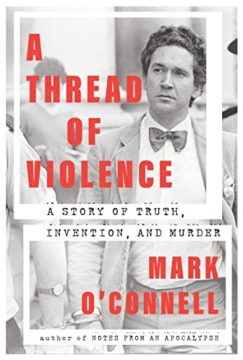 ‘And so it was that, on the evening of August 4, 1982,’ writes Mark O’Connell halfway through this gripping portrait of double killer Malcolm Macarthur, ‘the Irish government’s most senior legal official had his housekeeper prepare the spare room for his friend, a man who had just days previously murdered two strangers, and who had that very evening botched an armed robbery at the home of an acquaintance.’
‘And so it was that, on the evening of August 4, 1982,’ writes Mark O’Connell halfway through this gripping portrait of double killer Malcolm Macarthur, ‘the Irish government’s most senior legal official had his housekeeper prepare the spare room for his friend, a man who had just days previously murdered two strangers, and who had that very evening botched an armed robbery at the home of an acquaintance.’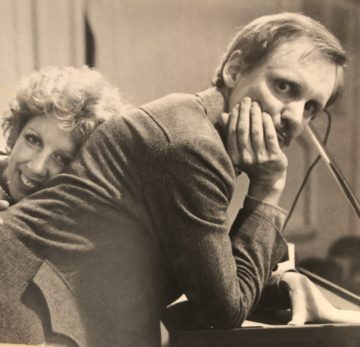 Even in December 2019, when he announced his disease in a long, devil-may-care New Yorker essay, he did it with a dynamite lede: “Lung cancer, rampant. No surprise.” The diagnosis wasn’t the only startling thing about these sentences: Schjeldahl was writing about his personal life for once, and doing so in the same chiseled prose in which he described Giacometti’s bronzes and Manet’s oils. No matter what his subject happened to be, he treated it as an invitation to write beautifully.
Even in December 2019, when he announced his disease in a long, devil-may-care New Yorker essay, he did it with a dynamite lede: “Lung cancer, rampant. No surprise.” The diagnosis wasn’t the only startling thing about these sentences: Schjeldahl was writing about his personal life for once, and doing so in the same chiseled prose in which he described Giacometti’s bronzes and Manet’s oils. No matter what his subject happened to be, he treated it as an invitation to write beautifully.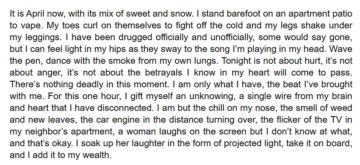
 I
I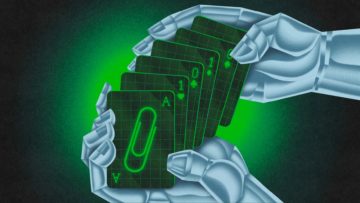 The scientists want the
The scientists want the 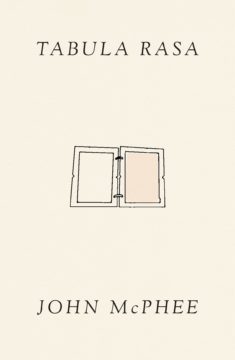 On the phone from his home in Princeton, N.J., on an unseasonably warm day in April, McPhee stresses that Tabula Rasa, which gathers the 92-year-old New Yorker writer’s reflections on projects he once contemplated but never wrote, is not an autobiography. It was, however, done according to Twain’s instructions for “how someone ought to do an autobiography—in a totally random miscellaneous way.” McPhee continues, “Twain’s point is just to jump in anywhere, anywhere at all, and start talking. And if something distracts you, if it seems more interesting, leave the first thing, and go to the second or the third. You can always go back to the first thing next week.”
On the phone from his home in Princeton, N.J., on an unseasonably warm day in April, McPhee stresses that Tabula Rasa, which gathers the 92-year-old New Yorker writer’s reflections on projects he once contemplated but never wrote, is not an autobiography. It was, however, done according to Twain’s instructions for “how someone ought to do an autobiography—in a totally random miscellaneous way.” McPhee continues, “Twain’s point is just to jump in anywhere, anywhere at all, and start talking. And if something distracts you, if it seems more interesting, leave the first thing, and go to the second or the third. You can always go back to the first thing next week.” In 1961, Federal Communications Commission chairman Newton N. Minow delivered a scathing assessment of the state of television to the National Association of Broadcasters, famously dubbing their collective output—from vapid and violent programing to the clamor of endless commercial breaks—a “vast wasteland.” Today, decades into the digital age, signs of this wasteland’s demise abound. Broadcast viewership has fallen by a third since 2015. Millions are pulling the plug on their cable subscriptions. Most adults under the age of thirty say they don’t watch TV. But is what Minow called “the television age” truly over? Or does the wasteland endure?
In 1961, Federal Communications Commission chairman Newton N. Minow delivered a scathing assessment of the state of television to the National Association of Broadcasters, famously dubbing their collective output—from vapid and violent programing to the clamor of endless commercial breaks—a “vast wasteland.” Today, decades into the digital age, signs of this wasteland’s demise abound. Broadcast viewership has fallen by a third since 2015. Millions are pulling the plug on their cable subscriptions. Most adults under the age of thirty say they don’t watch TV. But is what Minow called “the television age” truly over? Or does the wasteland endure?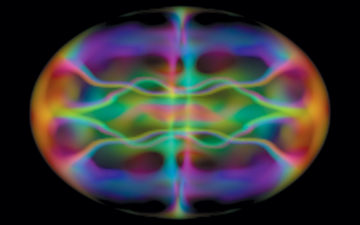 After you die, your body’s atoms will disperse and find new venues, making their way into oceans, trees and other bodies. But according to the laws of quantum mechanics, all of the information about your body’s build and function will prevail. The relations between the atoms, the uncountable particulars that made you you, will remain forever preserved, albeit in unrecognisably scrambled form – lost in practice, but immortal in principle.
After you die, your body’s atoms will disperse and find new venues, making their way into oceans, trees and other bodies. But according to the laws of quantum mechanics, all of the information about your body’s build and function will prevail. The relations between the atoms, the uncountable particulars that made you you, will remain forever preserved, albeit in unrecognisably scrambled form – lost in practice, but immortal in principle.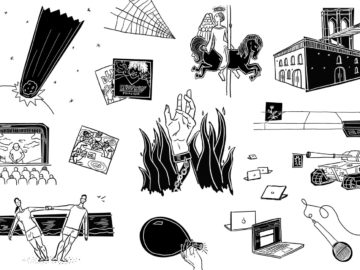 It’s commonplace to note that sociopolitical upheaval and artistic experimentation often flourish side by side. But today — despite an alleged “polycrisis” — new modes of cultural production don’t seem to be emerging. Three years after the start of the Covid-19 pandemic and the subsequent George Floyd rebellion, the arts seem stagnant and stubbornly centralized: franchise fare dominates at the box office; literary output is hampered by monopolized publishers; even the obsession with so-called nepo babies suggests a cultural bloodline without disruption. The internet, meanwhile, tends to both homogenize art and silo audiences by algorithm. We’ve begun to wonder if we’re overlooking experimental movements, or if they’re going extinct.
It’s commonplace to note that sociopolitical upheaval and artistic experimentation often flourish side by side. But today — despite an alleged “polycrisis” — new modes of cultural production don’t seem to be emerging. Three years after the start of the Covid-19 pandemic and the subsequent George Floyd rebellion, the arts seem stagnant and stubbornly centralized: franchise fare dominates at the box office; literary output is hampered by monopolized publishers; even the obsession with so-called nepo babies suggests a cultural bloodline without disruption. The internet, meanwhile, tends to both homogenize art and silo audiences by algorithm. We’ve begun to wonder if we’re overlooking experimental movements, or if they’re going extinct.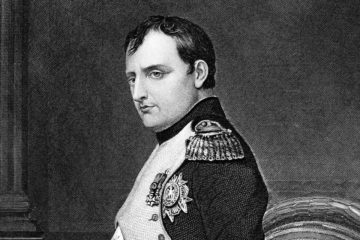 Let’s get this out of the way up front: Napoleon Bonaparte was not short. Most contemporary sources put him at about 5-foot-6,
Let’s get this out of the way up front: Napoleon Bonaparte was not short. Most contemporary sources put him at about 5-foot-6, 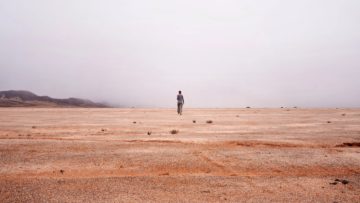 In 2017, a team of scientists from Germany trekked to Chile to investigate how living organisms sculpt the face of the Earth. A local ranger guided them through Pan de Azúcar, a roughly 150-square-mile national park on the southern coast of the Atacama Desert, which is often described as the driest place on Earth. They found themselves in a flat, gravelly wasteland interrupted by occasional hills, where hairy cacti reached their arms toward a sky that never rained. The ground under their feet formed a checkerboard, with irregular patches of dark pebbles sitting between lighter ones as bleached as bone.
In 2017, a team of scientists from Germany trekked to Chile to investigate how living organisms sculpt the face of the Earth. A local ranger guided them through Pan de Azúcar, a roughly 150-square-mile national park on the southern coast of the Atacama Desert, which is often described as the driest place on Earth. They found themselves in a flat, gravelly wasteland interrupted by occasional hills, where hairy cacti reached their arms toward a sky that never rained. The ground under their feet formed a checkerboard, with irregular patches of dark pebbles sitting between lighter ones as bleached as bone. Katherine Brading in Notre Dame Philosophical Reviews:
Katherine Brading in Notre Dame Philosophical Reviews: